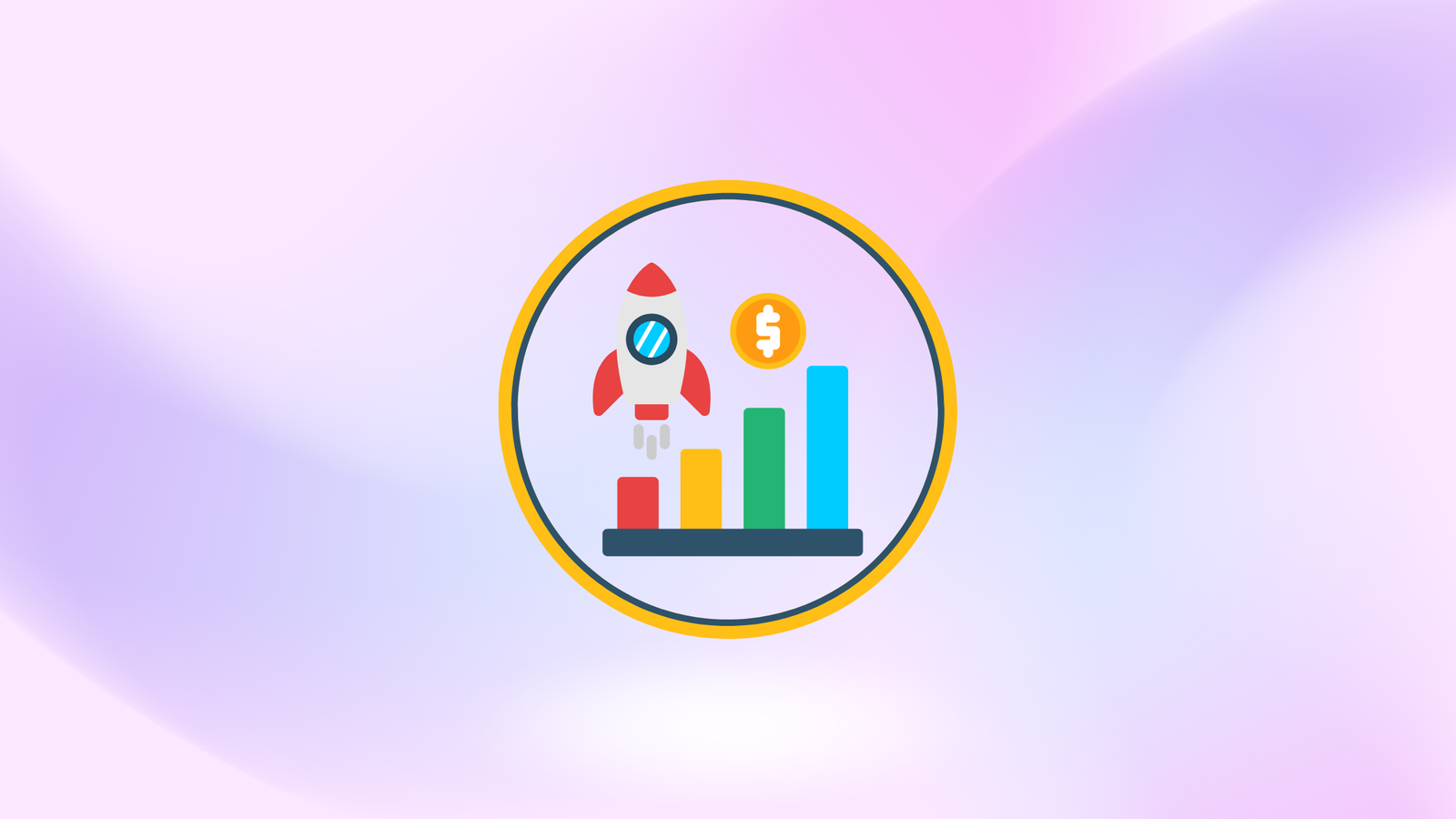Did you know the SaaS market growth is projected to explode from $3 trillion today to a staggering $10 trillion by 2030?
That’s an absolutely massive opportunity for growth!
While the average SaaS company chugs along at 22% annual growth, the best-in-class players are crushing it with 100%+ yearly expansion. The true rockstars? They’re hitting an eye-popping 192% growth.
But here’s the cold, hard truth: only 13% of SaaS startups ever break the $10M annual recurring revenue (ARR) barrier, even after a decade of grinding it out. Ouch.
So what separates the winners from the also-rans?
It’s not just about having a great product – it’s about your strategic approach to content, SEO, and product alignment.
You’re fighting for attention in a crowded marketplace where companies are dropping $9,600 per employee on SaaS tools. With 85% of business apps expected to be SaaS-based by 2025, standing out isn’t just nice – it’s necessary for survival.
Ready to discover the growth hacks that will take your SaaS business to the next level?
This guide cuts through the noise and delivers actionable growth strategies that actually work – from content optimization that drives qualified leads to pricing models that convert browsers into buyers.
Let’s get started!
Key Takeaways
-
- SaaS is scaling fast. The market is expected to grow from $3 trillion to $10 trillion by 2030 – but only 13% of startups ever reach $10M ARR. The real winners prioritize strategic alignment.
- Start with bottom-funnel content. Focus on high-intent search terms, product comparisons, and decision-stage resources to drive leads and signups faster.
- SEO is about relevance, not just rankings. Target buyer intent, optimize product pages, and earn links that actually impact domain authority and revenue.
- Think flywheel, not funnel. Funnels end at conversion – flywheels keep spinning by turning happy customers into advocates who fuel growth organically.
- Break down silos. When marketing, sales, and product teams align around a shared growth roadmap, you unlock faster revenue and better customer experiences.
- Treat pricing like a growth lever. Free trials convert better than freemium, and value-based pricing backed by testing beats gut-feel or competitor copycats.
- Track what actually matters. Focus on CAC, LTV, NRR, and ARPA. These metrics guide smart decisions, show true business health, and help avoid scaling too soon.
1. Understanding SaaS Growth in 2025
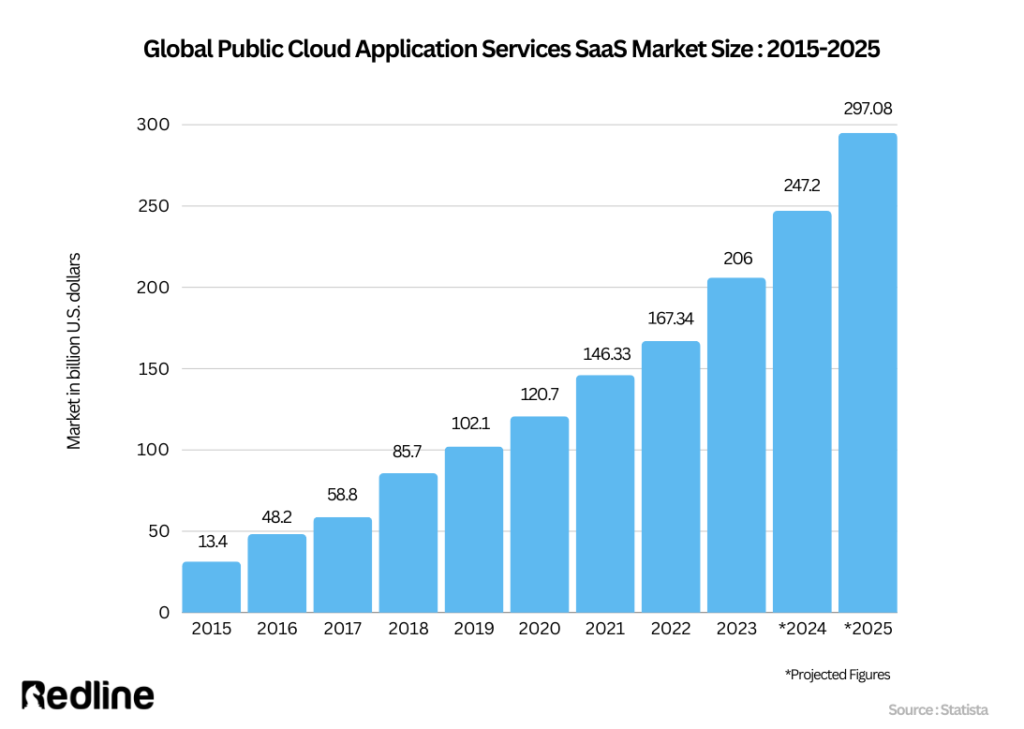
The SaaS landscape in 2025 looks wildly different than anything we’ve seen before.
Despite economic headwinds that have battered other industries, SaaS companies are showing remarkable resilience with an average growth rate of 17% across B2B businesses.
That’s roughly three times better than the S&P 500’s expected 5.5%.
This isn’t just dumb luck – it stems from fundamental shifts in how smart SaaS businesses approach growth.
1.1 What makes SaaS growth different today
Here’s something that might surprise you: cybersecurity companies are actually outperforming AI businesses in growth rates – a trend that’s held steady since Q1 2022.
This completely flips the script promoted by most tech publications that AI is the only game in town for serious growth.
Pricing models that actually work
When it comes to pricing, conventional wisdom gets it wrong again.
For smaller companies (below $1M ARR), fixed-rate pricing still delivers the best results, with usage-based pricing only becoming the smart play once you cross that $1M ARR threshold.
So much for the one-size-fits-all advice that pushes usage-based pricing as the universal solution!
Market growth projections
The numbers for the overall market are staggering.
The global SaaS space is projected to grow from $317.55 billion in 2024 to $1228.87 billion by 2032, with a compound annual growth rate (CAGR) of 18.4%.
North America currently owns 48% of the global market share, but watch out for the Asia Pacific region – it’s poised to become the fastest-growing market with a CAGR of 22%.
Recent growth patterns
Growth patterns in 2023-2024 tell an interesting story. After dropping to 14% in Q1 2023, growth rates have steadily climbed back to 17%.
Even more fascinating?
Sub-$1M ARR companies are showing surprising acceleration, mirroring what we saw after the 2008-2009 economic meltdown, when scrappy startups thrived while everyone else was struggling.
Hottest sectors in 2025
“Must-have” services are consistently crushing “nice-to-have” solutions. The hottest sectors include:
- Logistics and transportation
- Supply chain solutions
- Cybersecurity (outpacing AI since Q1 2022)
- Infrastructure platforms
This signals a fundamental shift toward services that businesses consider essential for their operations, regardless of what’s happening in the broader economy.
1.2 The role of content, SEO, and product in modern growth
Content, SEO, and product development aren’t just separate strategies anymore – they’re the three pillars of sustainable SaaS growth in 2025.
The data backs this up: organic search drives 300% more traffic to websites than social media. That’s not just impressive – it’s a game-changer for how we think about growth.
The Evolving Relationship Between Product and Pricing
The relationship between product and pricing has evolved dramatically too.
SaaS companies using hybrid models (mixing subscription and usage-based elements) are seeing a median growth rate of 21% , outperforming both pure subscription and strictly usage-based approaches.
This shows the power of flexible pricing that can adapt to customer needs while keeping revenue predictable.
The Impact of AI on Product Development
Product development itself looks nothing like it did just a few years ago.
According to McKinsey, AI is dramatically speeding up the development cycle by automating tedious tasks like project management and market analysis.
Benefits:
- Frees teams to focus on strategic, high-value work
- Gets products to market faster
- Reduces manual effort on repetitive tasks
The Maturation of Content Strategy
Content strategy has matured as well. The days of pumping out generic blog posts are over.
Smart SaaS companies are creating targeted material that addresses specific user pain points throughout the customer journey.
This approach makes perfect sense when you consider that 96.55% of content gets zero organic traffic from Google, mainly because it doesn’t target the right keywords.
The Evolution of SEO for SaaS
SEO has grown up too. For SaaS companies, effective SEO now goes way beyond keyword stuffing – it’s about:
- Technical optimization
- User experience
- Creating content with real authority
Content that ranks for informational queries can grab prospects early in their journey, while product-specific content converts those who are ready to pull the trigger.
The Central Role of PLG
The rise of product-led growth (PLG) has further cemented the connection between product, content, and SEO. In this model:
- The product itself drives customer acquisition
- Product experience leads to conversion and expansion
- Content and SEO serve as discovery mechanisms
Think of your product as the star of the show, with all other elements playing supporting roles to boost its visibility and adoption.
With product-led growth emphasizing the product’s central role, content becomes a vital engine for discovery and engagement.
Let’s explore how to build a content-first strategy that amplifies this effect.
2. Building a Content-First SaaS Growth Strategy
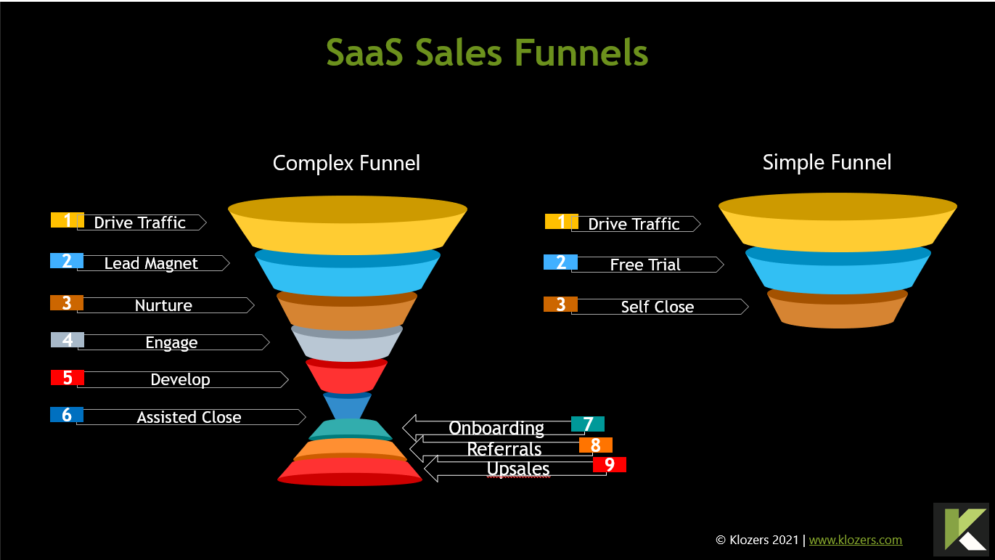
Content isn’t just a nice-to-have for SaaS companies in 2025 – it’s your secret weapon for sustainable growth.
Why?
Because unlike traditional marketing that burns cash with diminishing returns, a content-first approach builds authority, generates qualified leads, and drives conversions at scale without breaking the bank.
2.1 Why content is your most scalable growth asset
Here’s the beautiful thing about content: it delivers compounding returns over time.
While your ads stop working the moment you stop paying, that killer blog post or comparison guide keeps working for you month after month, year after year.
The common content strategy mistake
I need to let you in on a dirty little secret.
Most SaaS companies are completely botching their content strategy by obsessing over top-of-funnel content – you know, those general educational pieces that might get tons of email signups but rarely convert to actual paying customers.
This approach falls flat for two crucial reasons:
- A huge chunk of your potential customers are already in the consideration and conversion stages, actively hunting for solutions like yours right now.
- The folks signing up for your educational content often have totally different intentions than those looking to buy software.
The bottom-up content approach
So what’s the solution? Flip the traditional content funnel on its head!
The most effective SaaS content strategy starts with bottom-funnel content first, then moves to middle-funnel, and only tackles top-funnel content once you’ve exhausted those higher-converting opportunities.
This bottom-up approach delivers faster ROI because it captures prospects who are ready to buy now.
Just look at the results: one SaaS company shifted to this strategy and scaled signups to over 200 per month by prioritizing conversion-focused SEO content.
Content as your multi-purpose growth engine
Content isn’t just a single-purpose tool – it’s the fuel for every stage of your growth engine:
- It builds trust through thought leadership
- It educates prospects on your unique value proposition
- It addresses objections before they arise
- It supports existing customers and reduces churn rates
The numbers don’t lie: 67% of B2B buyers rely more on content than ever before during decision-making, with nearly half consuming 3-5 pieces before even talking to a salesperson.
2.2 How to map content to the SaaS buyer journey
Creating content that converts means understanding exactly where your audience is in their buying journey.
Each stage needs different content types to address specific questions and nudge prospects closer to that coveted conversion.
Bottom of funnel (Decision stage)
- Software category keywords (“best [use case] software”)
- Comparison content (“[competitor] alternatives”)
- Product pages targeting solution-specific terms
- Case studies showcasing customer success
These high-intent pieces should be your number one focus because they directly generate trials, demos, and product signups.
The ROI can be insane – one SaaS company found that a single interactive ROI calculator generated 1,200 demo requests over just six months.
Middle of funnel (Consideration stage)
- Use case content addressing specific pain points
- Template and checklist resources (with product integration)
- Webinars showcasing your solution in action
- Interactive tools like calculators or assessments
Middle-funnel content helps prospects imagine what life would be like using your product.
A killer approach? Offer templates that solve immediate problems while subtly showing the limitations of manual solutions.
Top of funnel (Awareness stage)
- Educational blog posts about industry challenges
- Thought leadership on emerging trends
- Original research reports with proprietary data
- Entertaining, relatable content that resonates with your audience
The primary goal of top-of-funnel content is to attract a broad audience, establish your expertise, and position your brand as a trusted resource for industry insights, ultimately drawing in potential customers who are just beginning to explore their needs.
Content calendar distribution
When building your content calendar, start with this breakdown:
- 60% bottom-funnel
- 30% middle-funnel
- 10% top-funnel content
As you max out those high-converting opportunities, you can gradually shift the ratio.
Maximizing content strategy value
To squeeze every drop of value from your content strategy, nail these critical elements:
- Audience specificity: Target content to specific buyer personas and their unique pain points
- Distribution strategy: Promote content through owned channels, paid amplification, and strategic partnerships
- Conversion optimization: Include contextual CTAs that match the buyer’s stage
- Measurement: Track first and last-touch attribution to understand how content influences the entire buying journey
The bottom line? By building a strategic content framework that prioritizes high-converting assets first, you create a sustainable growth engine that not only generates qualified leads but establishes your brand as the go-to authority in your space.
This often involves the smart implementation of various proven tactics to scale your SaaS business.
2.3 Creating a Content Flywheel (Not a Funnel)
Forget everything you know about traditional marketing funnels. While funnels have their place, they’re fundamentally flawed for long-term content strategy.
They treat customers as outputs—once they reach the bottom, they’re done. But that’s not how sustainable growth works.
Instead, imagine your content as a flywheel—a powerful mechanical device that stores energy and builds momentum with each push.
Unlike funnels, flywheels don’t stop. They accelerate with consistent force and reduced friction.
Customers as Growth Drivers
Your best customers don’t just disappear after purchase. They become advocates, sending more people your way. They return again and again. They amplify your message without you spending another dime on acquisition.
This is where content becomes truly powerful. Each piece you create doesn’t just attract new prospects—it energizes your existing audience, giving them something valuable to share, discuss, and act upon. The momentum builds upon itself.
Three Key Components
The three key components of your content flywheel are simple:
- Attract with valuable content that addresses real pain points
- Engage by developing meaningful relationships through your content
- Delight by exceeding expectations in every interaction
Each satisfied customer becomes energy that spins your flywheel faster.
Organizational Alignment
Unlike a funnel where marketing and sales teams hand off prospects like batons in a relay race, a flywheel puts customer experience at the center, aligning your entire organization around creating momentum.
When everyone pushes in the same direction—from content creators to customer support—friction disappears and growth accelerates.
Real-World Success Stories
The flywheel isn’t just theoretical; it’s the engine behind successful SaaS companies.
Atlassian, for example, prioritized user-friendly tools and an open marketplace, fostering organic adoption and advocacy that fueled their growth without relying heavily on aggressive sales.
Similarly, Slack’s initial traction stemmed from its product’s stickiness and the network effect it created within teams, turning satisfied users into powerful promoters through delightful experiences and seamless collaboration.
These examples demonstrate that sustainable SaaS growth hinges on building a product and user experience that cultivates enthusiastic advocates, organically powering the flywheel’s momentum.
Your content strategy, focusing on value and engagement, can create a self-sustaining growth engine for your SaaS business.
The Mindset Shift
It’s time to stop thinking about your content as a way to move people down a funnel.
Start seeing it as the force that powers your flywheel, creating unstoppable momentum that drives sustainable growth year after year through valuable and engaging experiences.
And so with a strong content foundation and a customer-centric flywheel in motion, the next critical step is ensuring this valuable content is discoverable through effective SEO strategies.
3. SEO for SaaS: Ranking, Relevance, and Revenue
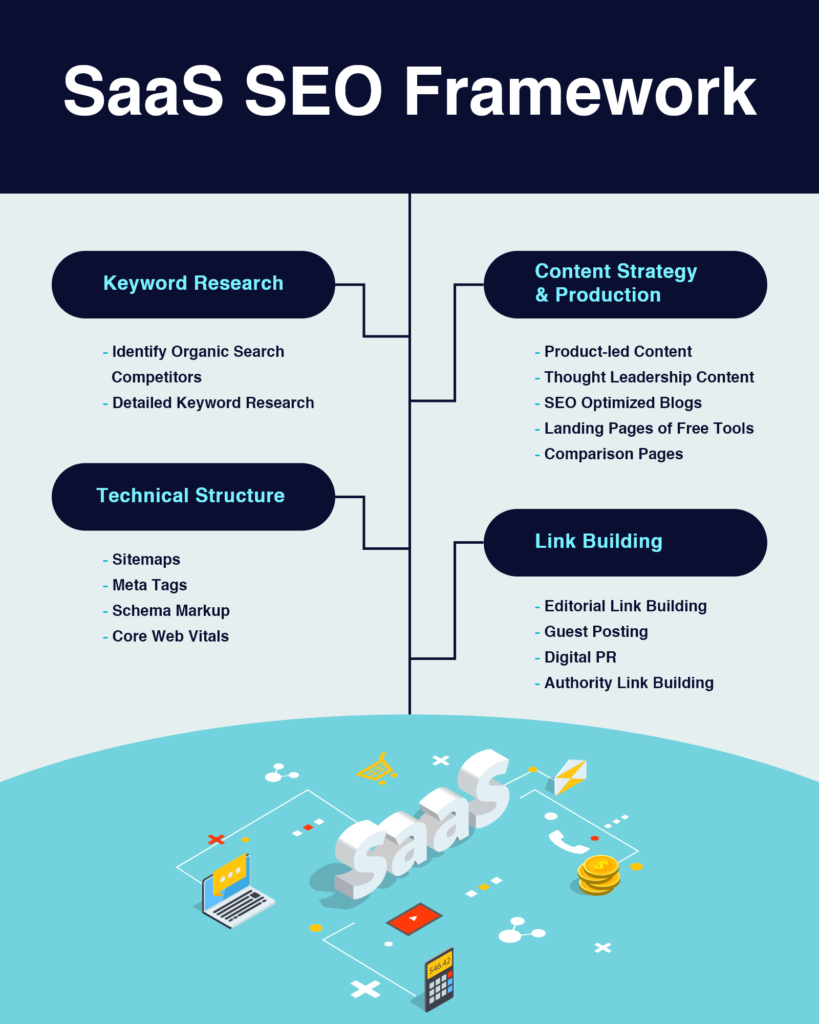
SEO isn’t just an advantage for SaaS companies anymore – it’s a growth-driving necessity in today’s hyper-competitive landscape.
What makes SaaS SEO different from traditional businesses?
The ability to target prospects at every stage of the customer journey, creating a consistent pipeline of qualified leads who actually convert.
But random keyword targeting won’t cut it. Let’s move on to discover the SEO strategies that actually move the needle for SaaS growth.
3.1 Keyword research for SaaS-specific intent
SaaS SEO success starts with understanding the unique search intent behind your prospects’ queries. This isn’t your standard keyword research approach – it’s about mapping to the complex B2B buying process with multiple decision-makers.
Here’s a sobering stat: 77% of B2B buyers say their last purchase was complex or difficult. That’s why precision in your keyword targeting matters so much.
To cut through the noise and reach these buyers effectively:
- Map keywords to specific buyer roles. C-suite execs are searching for ROI-related terms, while IT teams care about integration and security keywords. Targeting generic terms means missing these crucial nuances.
- Add industry-specific modifiers to stand out. Forget generic terms like “CRM software” – focus on tailored phrases like “CRM software for manufacturing” that speak directly to your target audience.
- Target buyer intent signals in your keyword strategy. With 57% of B2B buyers completing their purchase process before talking to sales , capturing early-stage interest through intent-based keywords is absolutely critical.
3.2 On-page SEO best practices for product pages
Your product pages are prime conversion real estate – but are you optimizing them properly? Most SaaS companies miss these crucial optimization opportunities.
Here’s what actually works for product page SEO:
- Create genuinely valuable content with actionable insights, not just feature lists. Generic product descriptions don’t rank and don’t convert.
- Thoughtfully optimize titles, meta descriptions, and headers with target keywords – but keep them readable and compelling for humans first.
- Speed matters more than ever. Compress those images and minimize JavaScript to boost loading times. I’ve seen conversion rates drop by 20% for each second of delay.
- Mobile optimization isn’t optional. Google’s mobile-first indexing means your mobile experience determines your rankings. Period.
- Apply proven psychological pricing tactics, like highlighting your most popular tier (hello, anchoring effect!) and including clear, compelling CTAs.
Technical SEO fundamentals are non-negotiable too.
Structured data helps search engines understand your content, while optimizing Core Web Vitals directly impacts your rankings through improved user experience signals.
3.3 Link-building strategies that actually work
Let’s talk backlinks. They’re still very crucial for SaaS domain authority, but I see too many companies wasting resources on tactics that flat-out don’t work.
The link building strategies that deliver real results include:
Resource link building – but not the way most people do it. Forget the outdated “skyscraper technique” of just making longer content. Focus instead on creating genuinely useful resources with original data or thought leadership that people actually want to link to.
Broken link building is a win-win opportunity hiding in plain sight. Find websites with broken links to competitor content, then swoop in with your relevant content as the solution. You help them fix a problem while earning valuable backlinks.
Free tools that showcase aspects of your product are link magnets. HubSpot’s ROI calculator has generated over 300 referring domains and 500+ backlinks. Ahrefs follows the same playbook, with their free tools earning nearly 800 referring domains and over 3,000 links.
Guest posting isn’t dead – it’s just misunderstood. Stop submitting random content to random sites. Build actual relationships with high-authority sites in your niche. This approach has helped smart brands land placements on sites like HubSpot, GetResponse, and even Forbes.
The bottom line?
The most effective SaaS SEO combines technical excellence with valuable content targeted at specific buyer intent.
When your SEO efforts align with your broader growth strategy, you create a sustainable acquisition channel that compounds in value over time – unlike ads that stop the moment you stop paying.
Effective SEO brings in the right prospects, fueling your flywheel. To truly maximize their potential, let’s explore how aligning your product, marketing, and sales teams can create a unified growth engine.
4. Aligning Product, Marketing, and Sales for Growth
Let’s get real for a second: successful SaaS growth doesn’t happen in silos.
You can create the most amazing content and nail your SEO strategy, but if your product, marketing, and sales teams aren’t working together like a well-oiled machine?
You’re leaving money on the table. A lot of it.
Here’s a stat that should wake you up: companies with strong sales and marketing alignment generate up to 208% more revenue from their marketing efforts.
Yet a shocking 96% of sales and marketing professionals admit they struggle with aligning strategies, objectives, and KPIs.
That’s a massive disconnect!
4.1 Creating a shared growth roadmap
Think of a shared growth roadmap as the backbone of your SaaS business.
When marketing, sales, and product teams operate from a unified playbook, they experience 24% faster revenue growth and 27% faster profit growth than organizations where these functions remain isolated.
Pretty compelling, right?
So how do you actually build this alignment? Here’s your game plan:
- Establish unified revenue goals that everyone contributes to and feels ownership over. When your marketing and sales teams are shooting for the same target—whether it’s hitting a specific revenue number or improving conversion rates—they’ll naturally collaborate better.
- Implement a Service Level Agreement (SLA) between departments. This isn’t just corporate bureaucracy – it’s a practical document that spells out:
- What marketing promises to deliver in qualified leads
- How quickly sales commits to following up
- How both teams will share feedback to continuously improve lead quality
- Create joint workflows that map out exactly how leads move through your funnel. When everyone agrees on what makes a lead “sales-ready,” you eliminate the dreaded finger-pointing.
- Foster a collaborative culture through regular check-ins and celebrating wins together. Those shared victories? They create momentum and keep everyone motivated toward the common goal.
HubSpot nails this with their “Smarketing” approach – aligning sales and marketing around shared KPIs and dashboards. The result? Higher conversions and significantly better revenue outcomes.
4.2 Using product data to inform content and campaigns
Your product data is a goldmine of insights just waiting to be tapped.
Did you know that 79% of marketing-qualified leads never convert into sales? That’s right – 79%! The culprit? Poor nurturing and teams working in isolation.
Here’s how to fix the broken system:
1. Leverage behavior analytics
Dig into customer behavior analytics to personalize your marketing. When you understand usage patterns, engagement metrics, and where users drop off, you can craft content that speaks directly to what your customers actually need.
This isn’t just marketing fluff – it creates genuine connections that drive conversions.
2. Implement revenue marketing
Adopt revenue marketing tactics that tie marketing activities directly to your bottom line. Instead of treating marketing as a cost center, this approach transforms it into a revenue-generating machine through smart, data-driven decisions.
Focus on tracking:
- Lead-to-Customer Conversion Rate
- Revenue Target
- Customer Acquisition Cost
3. Create shared visibility
Build shared dashboards that give everyone visibility into the customer journey. When marketing and sales use the same CRM system and tools, they can see exactly where prospects get stuck and fix those friction points together.
Success stories and implementation
Zendesk is crushing it with this approach. They developed a joint lead-scoring system between their marketing and sales teams that improved lead quality, sped up response times, and closed more deals.
The magic happens when you integrate product insights into your marketing efforts. This opens doors for:
- Targeted account-based marketing
- Smart upsell campaigns to existing customers
- Sales support through competitive intel and lead nurturing
- Sustained engagement after conversion
The continuous improvement loop
So what’s the secret sauce you’re asking?
Create a data feedback loop where marketing shares campaign insights with sales, and sales provides conversion feedback to marketing.
This continuous improvement cycle helps both teams refine their strategies and drive better performance.
Fair warning: building this alignment isn’t easy – it requires breaking down organizational silos and getting everyone on the same page. But the payoff is worth it.
When your product, marketing, and sales teams move in lockstep, you create a growth engine that’s far greater than the sum of its parts.
With a unified team driving qualified leads, the next crucial lever for sustainable expansion is implementing monetization and pricing strategies that are built to scale alongside your growth.
5. Monetization and Pricing Strategies That Scale
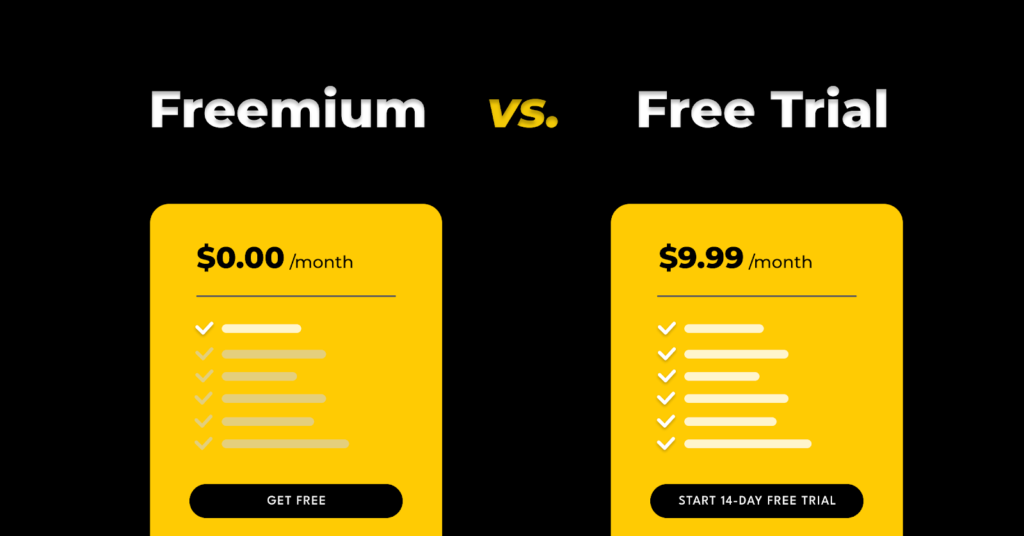
Did you know that the average business spends just six hours on pricing research throughout its entire lifetime?
That’s crazy when you think about it! Pricing is the ultimate growth lever for your SaaS business, yet most companies treat it as an afterthought.
5.1 Freemium vs. free trial: what works best in 2025
Let’s cut to the chase – the data clearly favors free trials for conversion effectiveness.
While freemium model pulls in more initial users (60 sign-ups per 1,000 website visits versus 30 for free trials), they convert at significantly lower rates – just 5% compared to free trials’ impressive 17.8%.
So how do you decide which model is right for your SaaS business? Here’s what you need to consider:
- Market position: Freemium shines in overserved markets where you’re the disruptor, while free trials crush it in underserved markets
- Product complexity: Got a simple product with a flat learning curve? Freemium might be your jam. Steeper learning curve? Free trials will serve you better
- User needs: Simple user requirements? Freemium. Specialized needs? Free trial
- Market size: Freemium demands a larger total addressable market since your conversion rates will be lower
Thinking about the trial specifics? Get this: opt-in free trials (no credit card required) hit 7.8% visitor-to-trial conversion rates, while opt-out trials (credit card required) convert at just 2.4% but then achieve a whopping 49.9% trial-to-paid rate. That’s a massive difference!
5.2 How to test and optimize pricing models
Value-based pricing – setting prices based on what customers believe your service is worth – outperforms everything else out there.
Yet surprisingly, only 39% of SaaS companies use this method, with 27% relying on gut feeling and 24% just copying competitor pricing. Yikes.
Ready to get serious about your pricing strategy? Here’s my advice:
- Test your pricing at least once or twice yearly (the best companies test quarterly)
- Model how price changes will affect your MRR, churn rate, and conversion rates
- When raising prices, highlight the value you’ve added recently
- Consider adjusting prices differently across customer segments
- Invest in solid reporting and automation for seamless implementation
The top-performing SaaS companies aren’t afraid to experiment. They run small pricing tests every quarter, testing increases of 10-50% to understand market elasticity and get a better feel for their product-market fit.
It’s fair to say that pricing isn’t a set-it-and-forget-it thing. It’s an ongoing experiment that requires constant attention and refinement.
But the payoff? Absolutely worth it when you see what it does for your bottom line.
You’ve established scalable pricing models to capture value. Now, to ensure you’re on the right track and identify areas for optimization, let’s delve into tracking the key SaaS growth metrics.
6. Tracking the Right SaaS Growth Metrics
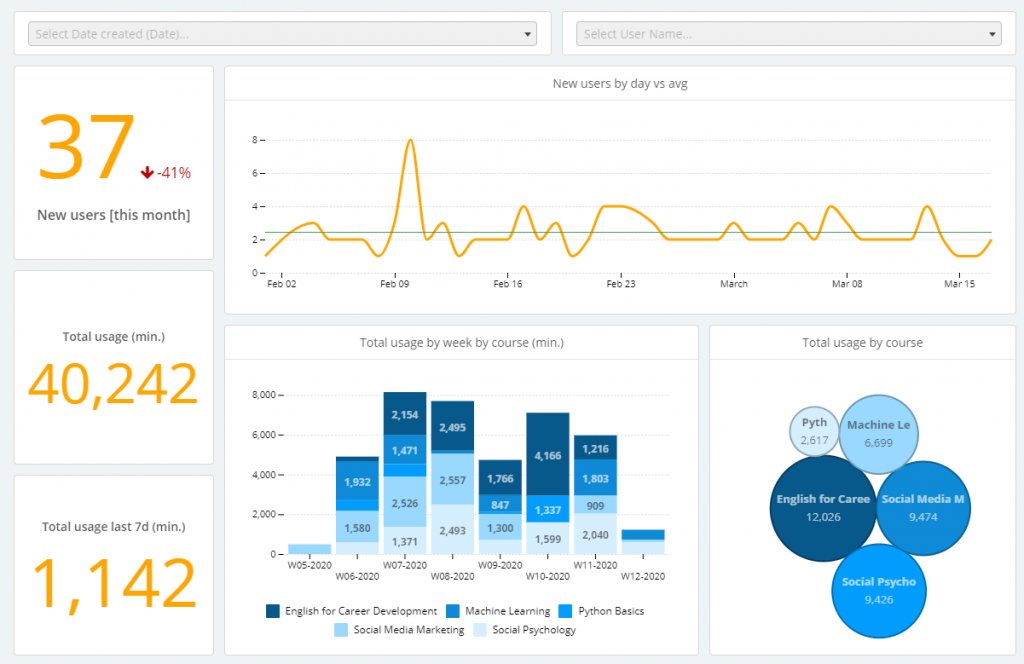
Are you tracking vanity metrics that look pretty but don’t drive decisions? You’d be shocked how many SaaS founders fall into this trap.
Here’s a sobering stat: 70% of startups crash and burn because they try scaling too quickly without truly understanding their key performance indicators. Ouch.
Growth without measurement is like driving blindfolded – you might be moving, but you have no idea if you’re headed toward success or a cliff edge.
Let’s cut through the noise and focus on the metrics that actually matter for your SaaS business.
6.1 Core metrics: CAC, LTV, NRR, and ARPA
These four horsemen of SaaS metrics will tell you more about your business health than all your dashboards combined:
1. Customer Acquisition Cost (CAC)
How much cash are you burning to land a new customer? Calculate this by dividing your total sales and marketing spend by the number of new customers you snagged in that period.
Benchmark to aim for: For early-stage companies, aim to recover your CAC within 12-15 months or less. Any longer, and you’re basically giving out interest-free loans to your customers while your cash flow suffers.
2. Lifetime Value (LTV)
This is the golden number that shows how much revenue a customer generates before they wave goodbye. The formula isn’t rocket science: (Average Revenue Per Account × Gross Margin) ÷ Churn Rate.
Key ratio to watch: The best SaaS players maintain an LTV:CAC ratio of at least 3:1. Translation: each customer should generate at least three times what it cost to acquire them. Anything less, and your unit economics start looking shaky.
3. Net Revenue Retention (NRR)
This powerhouse metric reveals whether your existing customers are spending more or less over time. The rockstar SaaS companies achieve NRR rates above 100%, meaning they grow revenue even if they never add another new customer.
Growth impact: The difference between winners and losers is stark: companies with NRR in the 110-125% range grow 49.5% annually, while those limping along at 60-80% NRR grow just 9.2%. Which camp would you rather be in?
4. Average Revenue Per Account (ARPA)
Simply put, how much is each customer paying you monthly or annually? While there’s no universal “good” ARPA, tracking this helps spot upsell opportunities and clarify your market position.
Trend to monitor: What matters isn’t the absolute value but the direction it’s heading. Flat or declining ARPA? That’s a massive red flag signaling pricing problems, poor upsell processes, or worse – your product isn’t delivering enough value to justify premium tiers.
6.2 How to set benchmarks by growth stage
Not all metrics matter equally at every stage. Here’s how to adjust your focus as you grow:
Very Early Stage (pre-product/market fit): Obsess over first conversions and basic validation. Just get 10 unaffiliated people to pay you for your product. That’s your first real validation beyond friends and family.
Early Stage (establishing unit economics): Now’s when LTV:CAC becomes your best friend. VC-backed companies typically grow around 30% annually at this stage, while bootstrapped ones average 25% [26]. Either way, focus on proving your unit economics work before pouring gas on the fire.
Growth Stage ($1-8M ARR): The top performers in this bracket are hitting 70% annual growth. Make MRR your North Star, alongside customer retention rates. Your monthly churn should stay under 3% – anything higher, and you’re filling a leaky bucket.
Scale Stage ($8-30M ARR): Top quartile companies grow around 45% annually. If you’re not seeing negative churn yet (where expansions exceed churn), you’re falling behind – 40% of companies in the $15-30M range have already crossed this threshold.
Maturity Stage: Time to put on your big-business pants. Recognized revenue and proper accounting take center stage. The Rule of 40 (growth rate + profit margin should exceed 40%) becomes your benchmark for success.
Fair warning: tracking metrics without action is just corporate theater. Establish a regular rhythm for reviewing these numbers, making informed adjustments to your strategy, and evolving your focus as your business grows.
Remember, in the world of SaaS, what gets measured gets improved – but only if you’re measuring what truly matters.
6.3 Your 3-Step SaaS Growth Model
Growing a SaaS business isn’t about chasing random tactics or quick wins. It’s about building a systematic growth engine that consistently delivers scalable revenue.
The most successful SaaS companies understand that sustainable growth comes from a balanced approach – not just acquiring new customers, but maximizing their lifetime value.
Step 1: Align Acquisition with Your Ideal Customer Profile
The foundation of SaaS growth begins with attracting the right customers, not just any customers.
Many companies make the critical mistake of optimizing for volume rather than fit. When you bring in accounts that don’t align with your solution, no retention strategy will save them.
Your acquisition strategy must be laser-focused on your Ideal Customer Profile (ICP). This means:
- Developing messaging that resonates specifically with high-value prospects
- Optimizing marketing channels that reach your ICP efficiently
- Setting clear expectations during sales to reduce churn risk later
- Qualifying leads based on long-term value potential, not just closing probability
Step 2: Transform Your Revenue Model from Funnel to Flywheel
Traditional SaaS growth treats revenue as a linear funnel: acquire → retain → expand. But this approach creates silos and friction.
Instead, build a revenue flywheel where each component reinforces the others:
- Acquisition feeds adoption by bringing in the right customers who are primed for success
- Retention builds advocacy as customers experience consistent value
- Advocacy drives referrals, reducing your acquisition costs and accelerating growth
This flywheel effect creates momentum that becomes increasingly difficult for competitors to match. Rather than constantly pouring resources into the top of a leaky funnel, you’re building a self-reinforcing system.
Step 3: Maximize Customer Lifetime Value Through Intentional Expansion
The most profitable growth comes from existing customers, not new ones. Yet many SaaS companies leave significant revenue on the table by failing to intentionally design for expansion. Your expansion strategy should be:
- Built into your product roadmap from day one
- Supported by value-based pricing tiers that grow with customer success
- Driven by customer success teams equipped to identify expansion opportunities
- Measured as rigorously as your acquisition metrics
By implementing this 3-step growth model, you’ll create sustainable momentum that balances new customer acquisition with the often-overlooked power of retention and expansion.
This isn’t just about growing faster—it’s about growing smarter, with higher margins and greater predictability.
Conclusion
Wow, we’ve covered a ton of ground in this ultimate guide to SaaS growth!
Success in the ultra-competitive SaaS landscape isn’t about random tactics thrown together – it’s about building an integrated growth engine where content, SEO, product alignment, and strategic pricing work together in perfect harmony.
The biggest takeaway? Start with bottom-funnel content first. By targeting those high-intent prospects already searching for solutions like yours, you’ll see faster ROI while building a solid foundation for sustainable growth.
Companies that get their sales, marketing, and product teams rowing in the same direction see a whopping 208% revenue advantage – the difference between thriving and barely surviving.
Your metrics tell the real story of your business health. Track the right KPIs at each growth stage to avoid the deadly trap of scaling too early that kills 70% of startups.
The most successful SaaS companies aren’t running on gut feelings – they’re constantly testing, optimizing, and using product insights to inform every decision.
So here’s my challenge to you: pick just one area we’ve covered and commit to mastering it over the next month. The SaaS growth opportunity is massive, but only for those willing to put in the work!
SaaS Growth related FAQs
If your content isn’t driving demo requests, trial signups, or ranking for keywords with buying intent, it’s not working. A healthy strategy consistently generates qualified traffic, converts visitors into leads, and supports sales by addressing real objections. Start tracking ROI by content type and keyword intent—not just pageviews.
Prioritize bottom-funnel content first: feature comparison pages, use-case breakdowns, ROI calculators, and “best [product] for [industry]” roundups. These rank faster and convert better because they target prospects who are already searching for solutions. One well-optimized comparison page can outperform 10 generic blog posts.
Paid ads are great for short-term testing. But long-term, SEO compounds. It keeps driving leads even when you stop spending. If you’re strapped for budget, start with 3–5 high-intent SEO pages that speak directly to your ideal customer. Then build out from there.
Test small changes. Start by raising prices for new users only, or adding value-based tiers that better reflect usage or outcomes. Make sure your pricing page highlights benefits, not just features—and give users a reason to upgrade. The best SaaS companies iterate on pricing quarterly, not once a year.
It’s not always the trial’s fault. Look at what happens before and after sign-up. Is your content setting the right expectations? Are onboarding flows guiding users to quick wins? Do users understand the value before their trial ends? Small tweaks—like clearer CTAs or in-app nudges—can double conversion rates.




